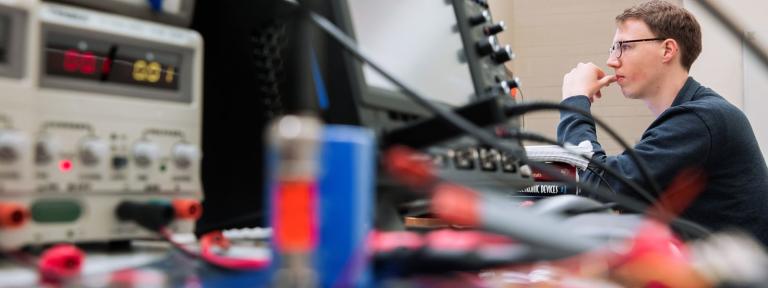
Maybe the creation of the U.S. auto industry was simply a fluke.
But more than likely it wasn't. In 1804 Oliver Evans was just another young inventor interested in steam engines. His focus was to harness the power of steam for a variety of industrial purposes and in 1803, he developed one of the most powerful and portable steam engines ever created. One day, he figured he'd attach a steam engine to a wagon and see what happened. This exercise eventually led to the creation of the country's first steam river dredge named the Orukter Amphibolos (otherwise known as the amphibious digger)-an odd but powerful machine that was also the first amphibious vehicle ever produced.
The automobile has indeed come a long way since Evans' day. No more hand cranks. No more handles to roll up windows. No more rumble seats. Most every component and system in today's car is controlled by intricate electronics, thus making vehicles highly complex products to design, test and produce.
The BOSCH/ETAS Automotive Electronics Systems Laboratory at Kettering attempts to unravel the mystery of electronic control systems in cars by offering students the latest software and hardware for designing, simulating, testing and evaluating electronic control systems. Recently ETAS (which initially contributed software and hardware to this lab in 2000) provided yet another contribution of new software and hardware valued at more than $107,000, which, according to Electrical Engineering Professor Mark Thompson will help students make cars, "even smarter."
Thompson also said that the new upgrades "provide students the opportunity to perform control systems modeling and simulation in real-time, just like our industry partners do today."
Perhaps Evans would be proud of what today's undergraduate engineering students can accomplish in the laboratory for the automotive industry.
These upgrades include simulation controllers, PWM input/output cards, digital I/O cards and power supplies. Additionally, ETAS provided a new ES 1000 chassis to accommodate the higher performance system controller for real-time systems simulation and evaluation development. The new software, which is called INTECRIO, enables students to rapidly prototype automotive systems using mathematical models based on MATLAB/Simulink, a package students are already familiar with based on coursework in other Kettering classes. This, combined with the hardware upgrade, allows students enrolled in EE-580 Automotive Electronics Systems and EE-490 Student Design Project courses to investigate various automotive sub-system designs and support a number of diverse applied research activities.
"Based on student experience with MATLAB/Simulink," Thompson explained, "most are capable of rapidly prototyping systems using the software's mathematical models. They're familiar with MATLAB's graphical modeling, which improves learning productivity. They can then carry out simulations to gain an in-depth understanding of the design. Students follow this activity up by using the INTECRIO and ETAS hardware, import the Simulink models and perform real-time system simulations on the ES 1000 chassis."
The model-based simulation results then undergo comparison to prototyped ETC system performance to verify the validity of the design approach, Thompson said. The previous hardware and software was of great benefit, he noted, but required more time and experience for students to learn thoroughly. The updated hardware, software and new controller chassis represents exactly what corporate partners currently use and students are able to quickly pick up on how to operate the system.
Some of the areas in a vehicle that students are currently modeling include electric cooling systems, memory seat positions and electric throttle control systems, or what's known as throttle-by-wire systems. Other areas include powertrain systems and braking.
"These upgrades are very user-friendly," Thompson said, adding that several individuals helped make this contribution a reality. They include Jeff Kessen '95, director of the Customer Value Team and Koos Zwaanenburg, business developer, both of whom work for the American Operations division based in Ann Arbor, Mich. Others involved in this project include Kettering Senior Jon Kowalski of Commerce Township, Mich., who co-ops at ETAS.
Thompson hopes that the relationship developed with ETAS continues to grow. "We hope to do more sub-system development in future courses," he said. "Really, any electric control systems could be examined using these resources. The more we can investigate, the more experienced students become as they approach graduation day," he concluded.
Contact Dr. Mark Thompson to learn more about the BOSCH/ETAS Automotive Electronics Systems Laboratory at Kettering.
Written by Gary J. Erwin
(810) 762-9538
gerwin@kettering.edu